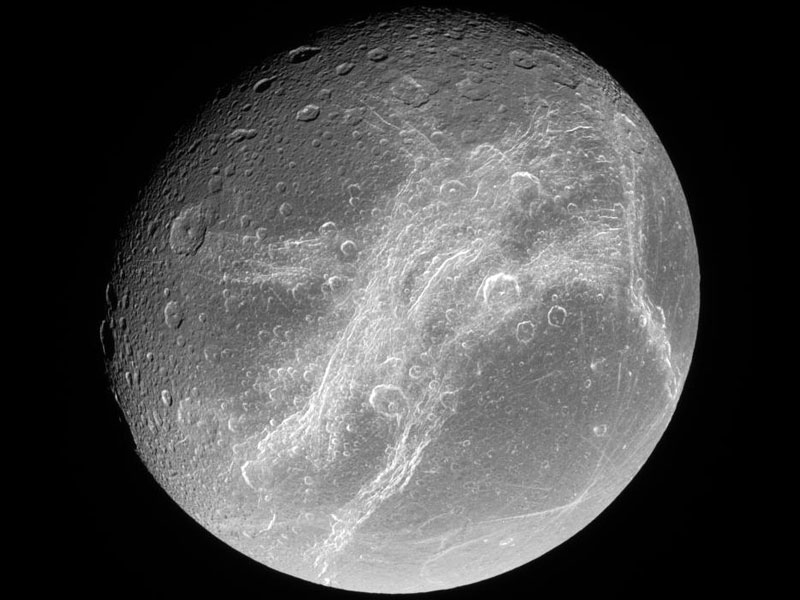Explanation: What causes the bright streaks on Dione? Recent images of this unusual moon by the robot Cassini spacecraft now orbiting Saturn are helping to crack the mystery. Close inspection of Dione's trailing hemisphere, pictured above, indicates that the white wisps are composed of deep ice cliffs dropping hundreds of meters. The cliffs may indicate that Dione has undergone some sort of tectonic surface displacements in its past. The bright ice-cliffs run across some of Dione's many craters, indicating that the process that created them occurred later than the impacts that created those craters. Dione is made of mostly water ice but its relatively high density indicates that it contains much rock inside. Giovanni Cassini discovered Dione in 1684. The above image was taken at the end of July from a distance of about 263,000 kilometers. Other high resolution images of Dione were taken by the passing Voyager spacecraft in 1980.
1999 2000 2001 2002 2003 2004 2005 2006 2007 2008 2009 2010 2011 2012 2013 2014 2015 2016 2017 2018 2019 2020 2021 2022 2023 2024 2025 |
Yanvar' Fevral' Mart Aprel' Mai Iyun' Iyul' Avgust Sentyabr' Oktyabr' Noyabr' Dekabr' |
NASA Web Site Statements, Warnings, and Disclaimers
NASA Official: Jay Norris. Specific rights apply.
A service of: LHEA at NASA / GSFC
& Michigan Tech. U.
|
Publikacii s klyuchevymi slovami:
Saturn - Dione - Saturn - Diona
Publikacii so slovami: Saturn - Dione - Saturn - Diona | |
Sm. takzhe:
Vse publikacii na tu zhe temu >> | |
